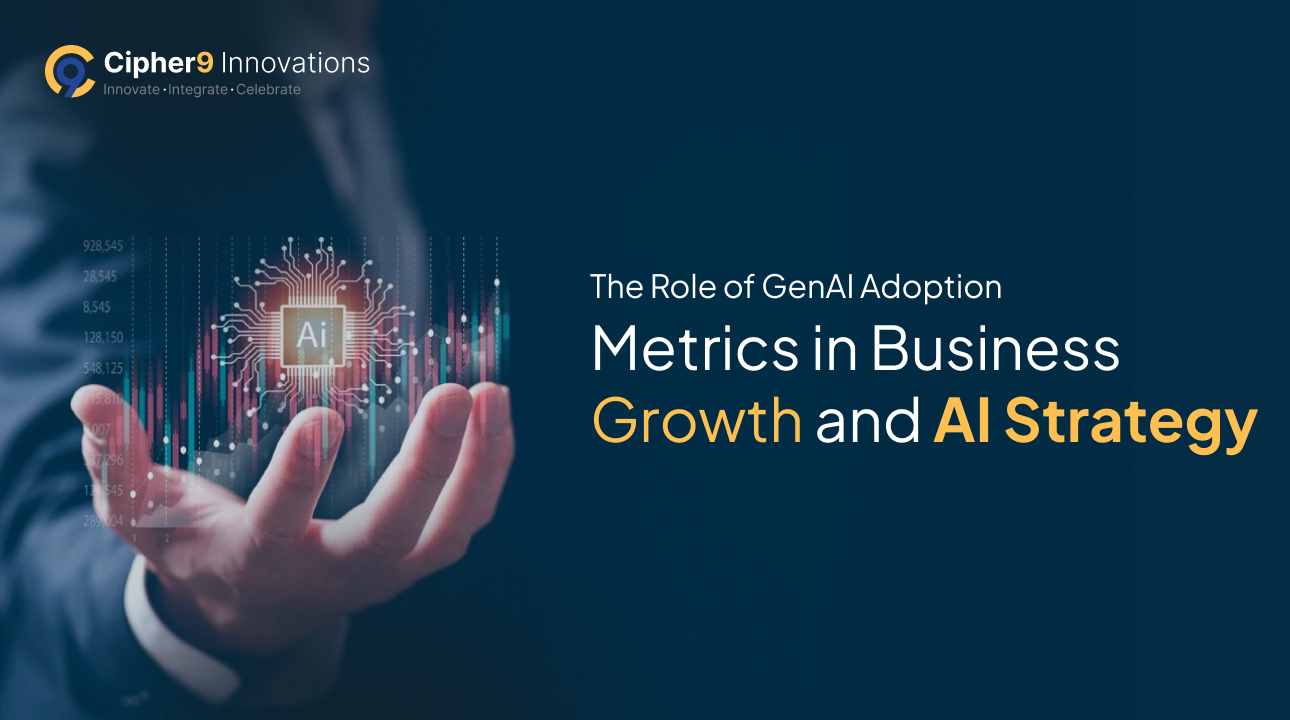
Introduction to GenAI Adoption Metrics
Generative AI (GenAI) is no longer just a new idea—it’s now a big force in digital change. Companies in many industries use GenAI for automation, content creation, product design, and customer service. But as more businesses adopt it, one big question remains: How do you measure success?
This is where GenAI adoption metrics matter. They help track ROI, check efficiency, and show the long-term value of AI projects.
Why measuring adoption is critical
If results are not measured, AI projects can turn into costly experiments. GenAI adoption metrics give businesses clear insight into performance, efficiency, customer impact, and financial returns. This ensures investments deliver real business value.
The rise of Generative AI across industries
From ChatGPT boosting workplace productivity to AI-driven drug discovery changing healthcare, GenAI is already transforming industries. Companies are no longer asking if they should adopt AI—but how fast and how well they can scale it.
Global Generative AI Adoption Trends
Current market statistics
Reports show that by 2025, more than 80% of companies plan to use GenAI. Finance, healthcare, and retail lead the way, while other industries are catching up.
Key drivers of adoption in 2025
- Cloud-based AI platforms make tools more accessible
- Rising demand for personalized customer experiences
- Competitive pressure to automate and cut costs
Growing VC funding and corporate R&D investments
Regional and sector-wise adoption
- North America and Europe lead in large-scale enterprise adoption.
- Asia-Pacific stands out for cost-efficient AI, especially in fintech and retail.
- Emerging markets use AI in logistics, farming, and education.
AI Adoption Statistics 2025: What the Numbers Say
- Nearly 90% of Fortune 500 companies are testing GenAI pilots. Adoption is no longer just early trials.
- Startups adopt faster and innovate more. They face fewer barriers.
- Large enterprises focus on compliance, governance, and global scaling.
Investment and funding trends in GenAI
- In 2025, VC funding for AI startups passed $50 billion.
- Top areas of focus: AI agents, workflow automation, and generative design.
Enterprise GenAI Use Cases Transforming Industries
Finance & Fintech
- AI-powered fraud detection
- Personalized wealth management assistants
- Automated compliance and reporting
Healthcare & Life Sciences
- Faster AI-driven drug discovery
- Virtual assistants for telehealth
- Predictive analytics for patient care
Retail, e-commerce, and customer experience
- Hyper-personalized shopping recommendations
- AI inventory optimization for supply chains
- Conversational chatbots for customer service
Gaming, media, and entertainment
- AI-powered game development and design tools
- Smart content recommendation engines
- Automated storyline and creative content generation
Measuring AI ROI: Metrics That Matter
Efficiency and productivity benchmarks
- Reduced manual workload hours
- Faster task completion rates
- Adoption rates of AI-driven workflows
Cost reduction and revenue growth
- Lower operational costs from automation
- Creation of new revenue streams via AI-driven products
- Improved customer retention and lifetime value
- Customer engagement and retention metrics
Higher Net Promoter Score (NPS) - Increased customer satisfaction scores
- Boosted active user engagement through personalization
AI Adoption Benchmarks for Businesses
Comparing adoption maturity levels
Enterprises typically fall into three adoption categories:
- Explorers – experimenting with pilots.
- Implementers – applying GenAI to select business functions.
- Leaders – scaling GenAI across all operations.
KPIs for scaling GenAI solutions
- Time-to-market improvements for AI-enabled products
- Operational savings per deployment
- Employee productivity and efficiency gains
Challenges and barriers to measurement
- Complex data privacy and compliance requirements
- Lack of AI governance frameworks
- Difficulty aligning AI outcomes with enterprise KPIs
Generative AI Growth Metrics for 2025 and Beyond
Forecasts and future adoption rates
By 2030, Generative AI is projected to contribute over $4.4 trillion annually to the global economy.
Integration with Web3 and blockchain ecosystems
AI is increasingly being used in dApps, NFT marketplaces, and metaverse platforms, combining intelligence with security and decentralization.
Emerging opportunities for enterprises
- AI copilots for workforce productivity
- Generative design tools in manufacturing
- Smart virtual agents in customer care
Cipher9 Innovations AI Solutions
How Cipher9 empowers GenAI adoption
At Cipher9 Innovations, we help enterprises implement data-driven GenAI adoption metrics to maximize ROI and scalability.
Tailored enterprise AI development
Our solutions include custom AI tools, workflow integrations, and enterprise-grade platforms, designed around unique business needs.
Future-ready strategies for digital transformation
Cipher9 enables organizations to embrace AI, Web3, and automation securely, while ensuring measurable success through benchmarks and KPIs.
Conclusion
Generative AI adoption is no longer optional—it is a strategic imperative for businesses that want to remain competitive. However, true success depends on how adoption is measured and scaled.
Companies that define clear GenAI adoption metrics, align AI outcomes with business goals, and prioritize ROI measurement will lead in this transformation era.
At Cipher9 Innovations, we partner with enterprises to design, implement, and optimize future-ready GenAI solutions that deliver measurable results. The future of AI belongs to businesses that not only adopt but also quantify their success—and we’re here to make that journey possible.

